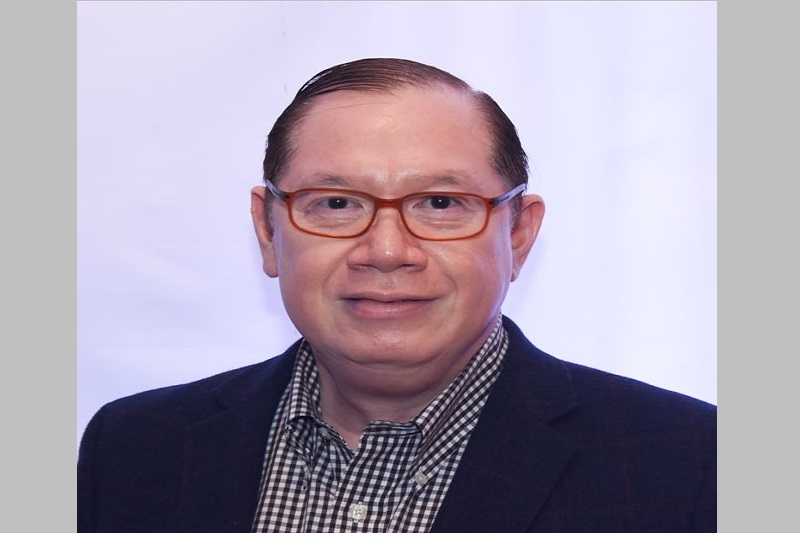
In its constant pursuit of helping citizens get a more and relatable understanding of various tech-related policies, initiatives and services, OpenGov endeavours to speak directly with those directly responsible.
The Republic of the Philippines signed Republic Act No. 11223: the Universal Health Care (UHC) Act into law on 20 February 2019; the landmark law was designed to address the country’s lack of adequate and efficient health care system.
It aims to reform and improve the current health care system by ensuring that all Filipinos, especially low-income individuals, stay healthy and productive in their work, resulting in higher incomes and improved lives.
The UHC Act envisions:
- An integrated and comprehensive approach to ensure that all Filipinos are health literate, provided with healthy living conditions, and protected from hazards and risks that could affect their health;
- A health care model that provides all Filipinos with access to a comprehensive set of quality and cost-effective, promotive, preventive, curative, rehabilitative, and palliative health services without causing financial hardship, and prioritizes the needs of the population who cannot afford such services;
- A framework that fosters a whole-of-system, whole-of-government, and whole-of-society approach in the development, implementation, monitoring, and evaluation of health policies, programs, and plans; and
- A people-oriented approach to the delivery of health services that is centered on people’s needs and well-being, and cognizant of the differences in culture, values, and beliefs.

To learn more about this and how the nation is addressing these sensitive and complex aspects of its digital journey, OpenGov Asia had the privilege of speaking with Dr. Enrique A. Tayag, Director IV, Knowledge Management and Information Technology Service, Department of Health (DOH).
Background
As the Head of DOH’s Knowledge Management and Information Technology Service (KMITS), Dr. Tayag is responsible for overseeing its day to day operations.
He ensures information and communication technology (ICT) will deliver goals for both health information and health services.
He explained that KMITS has nothing to do with the private sector. They serve the central office as well as the regional offices of the Department.
It is made up of three divisions: IT infrastructure and connectivity, software and information systems design, and knowledge management.
The infrastructure and connectivity division is in charge of procurement and equipment maintenance. Any request for equipment will go through them for approval.
The software and information systems design division pertains to their team of in-house developers, who are responsible for designing, programming and monitoring their programs.
The third, which is knowledge management, oversees the website as well as protects the archives.
“We should see the Filipinos getting healthier because of technology. If using it would bring them stress and make them sick, then it will defeat its purpose.”
Dr. Enrique A. Tayag
Brief History
Dr. Tayag shared that they have a data centre; it was in 2012 when they migrated from a paper-based information system to an electronic and digitalised one.
The primary purpose of investing on Electronic Medical Records (EMR) was to effectively manage patient care. One benefit would be less trouble for the physician in locating information about the patient as it is stored electronically. Whereas paper-based records have the tendency to get lost, or worse, damaged and destroyed by calamities such as typhoons, which usually plague the country.
Two systems were developed, one for primary care and the other one for hospitals. The initial uptake was slow, 20% for the first 3 years due to several factors that include infrastructure and connectivity.
Add to that the presence of multiple EMR providers. DOH advised the providers on the criticality of inter-operability so that the different systems will be able to speak and integrate with each other.
However, problems rose because patients do not always go to the same hospital or health care centre. Going to one or the other requires the patient to keep two separate records, which basically contain the same information. They are still finding a way for these two separate systems to communicate.
UHC
Eric clarified that the UHC Act in the Philippines is not about having free medical care. It is about giving every Filipino access to affordable quality health services that they need, without resulting to empty pockets or more poverty.
He highlighted that for UHC to be properly implemented, it would require digital health. They reached out to lawmakers for the passage of an E-Health Bill, which is still being studied. He explained that the Bill would regulate the use of technology, ensuring that health providers have the correct credentials to use IT. Ultimately, this is for the protection of the people so that they will get the proper and correct care.
Furthermore, implementation of the UHC law would focus on the Poor, Public Health, Province-wide and Public Health facilities (4 Ps).
HRITES
When asked for an ICT initiative that KMITS has done in line with this, Dr. Tayag proudly answered, “Human rights.”
He proceeded to explain that it is actually HRITES, an acronym that is easily remembered if one calls it human rights.
H stands for Health Information Exchange and Health Information System.
There is a plan in place that will require the different agencies and organisations to share health-related data for data analytics. Recognising trends, through the use of data, can help the sector predict possible scenarios and find ways to prevent them from happening.
To prepare for that, the Department was able to send one staff member to the Asian Institute of Management (AIM) to undergo a 14-month training course on data science.
R stands for Registries of health providers, patients, services, and facilities.
There is a database of registries that is currently being populated with this information. Having one will make the location of availability much easier to track.
For instance, a patient, from a certain area, comes in to ask where they can avail a certain medical service or see a specific medical practitioner. It would be easier to pinpoint the nearest available hospital or centre where they can have the service done or know where they will be able to see the specific doctor.
I stands for Infrastructure and Connectivity.
This is where DOH is working with the Department of Information and Communications Technology (DICT). KMITS can provide the computers needed but DICT is responsible for providing the connectivity.
T stands for Telehealth and Telemedicine.
Connectivity is critical for Telehealth and Telemedicine to succeed. Tele-psychiatry can also be under this umbrella. This allows for virtual consultations. There is no need for the patients to travel for a day, depending on how far they are, in order to access specific services. The benefits of this include convenience and faster results.
E stands for E-Supply Chain.
Technology such as barcoding and RFID will be introduced. This makes tracking of medicine supply much easier, thereby improving the process. It will solve problems concerning the lack of vaccines and medicines.
S stands for Skilled ICT workforce.
The workforce should be a merge of the skillsets of both health providers and IT experts. Health providers should have an understanding of IT as they will be the ones using the systems.
IT experts, meanwhile, should know and understand the health processes so that the systems they will create can address the gaps.
Risks and Challenges
A major challenge to the implementation would be money. The project’s success would depend on the budget. Eric mentioned a plethora of mitigations to address this such as doing the project in stages, scaling down to what can be afforded or to go into a public-private partnership (PPP).
Another problem would be human resources. The people are not equipped with the proper skills. Eric shared that in some hospitals, the nurses are performing IT tasks because, according to him, IT experts are expensive. Rather than allot money for an IT person, which is not a priority, they would task current workers to take on the role of one.
There are still areas in the country without connectivity, which will hinder the goal of the project. Sending images and information is critical. Without a fast and stable connection, it might be too late for the patient.
Expected Outcomes and Measures of Success
The expected outcome is to streamline the processes, provide healthcare information to the people and be able to guarantee an improved experience for all. In addition, it should be able to adequately support the implementation of the Universal Healthcare Act.
The success of the project will be measured by its coverage. The target is that 80% are able to gain access to the system and at the same time, be able to use it with ease.
Additionally, impact indicators should show that the initiative had really helped improve the health of Filipino citizens.




















